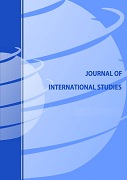OIL PRICES ASYMMETRIC AND EXCHANGE RATE VOLATILITY: CASE OF OIL-EXPORTING EMERGING COUNTRIES
OIL PRICES ASYMMETRIC AND EXCHANGE RATE VOLATILITY: CASE OF OIL-EXPORTING EMERGING COUNTRIES
Author(s): Kazeem Abimbola SanusiSubject(s): Energy and Environmental Studies, International relations/trade, Financial Markets
Published by: Fundacja Centrum Badań Socjologicznych
Keywords: exchange rate; oil price; volatility; nonlinear ARDL;
Summary/Abstract: This paper empirically examines the asymmetric impacts of oil prices on exchange rate volatility in oil-exporting developing countries. The study uses a nonlinear ARDL model to investigate the presence or otherwise of asymmetric relations between oil prices and exchange rate volatility from 1995 to 2018. The annual data was collected from WDI for 25 developing oil-exporting countries. Empirical evidence suggests the presence of asymmetric relationship in both short and long run. Price of oil has a long-run asymmetric impact on volatility of exchange rate, with the decrease in oil price, and is significantly related to exchange rate volatility, while the increase in oil price is not. The short-run asymmetric relationship also shows that only the decrease in price of oil has a substantial association with exchange rate volatility, while the relationship is insignificant in the case of oil price increase. The study concludes that oil price increase does not significantly affect exchange rate movement or volatility in the selected countries while oil price reduction has significant effects on exchange rate volatility in both short and long run. The study recommends that efforts must be made to prevent downward trend in oil price in order to avoid its concomitant negative effects on the economy via the exchange rate instability.
Journal: Journal of International Studies
- Issue Year: 13/2020
- Issue No: 4
- Page Range: 101-109
- Page Count: 9
- Language: English

